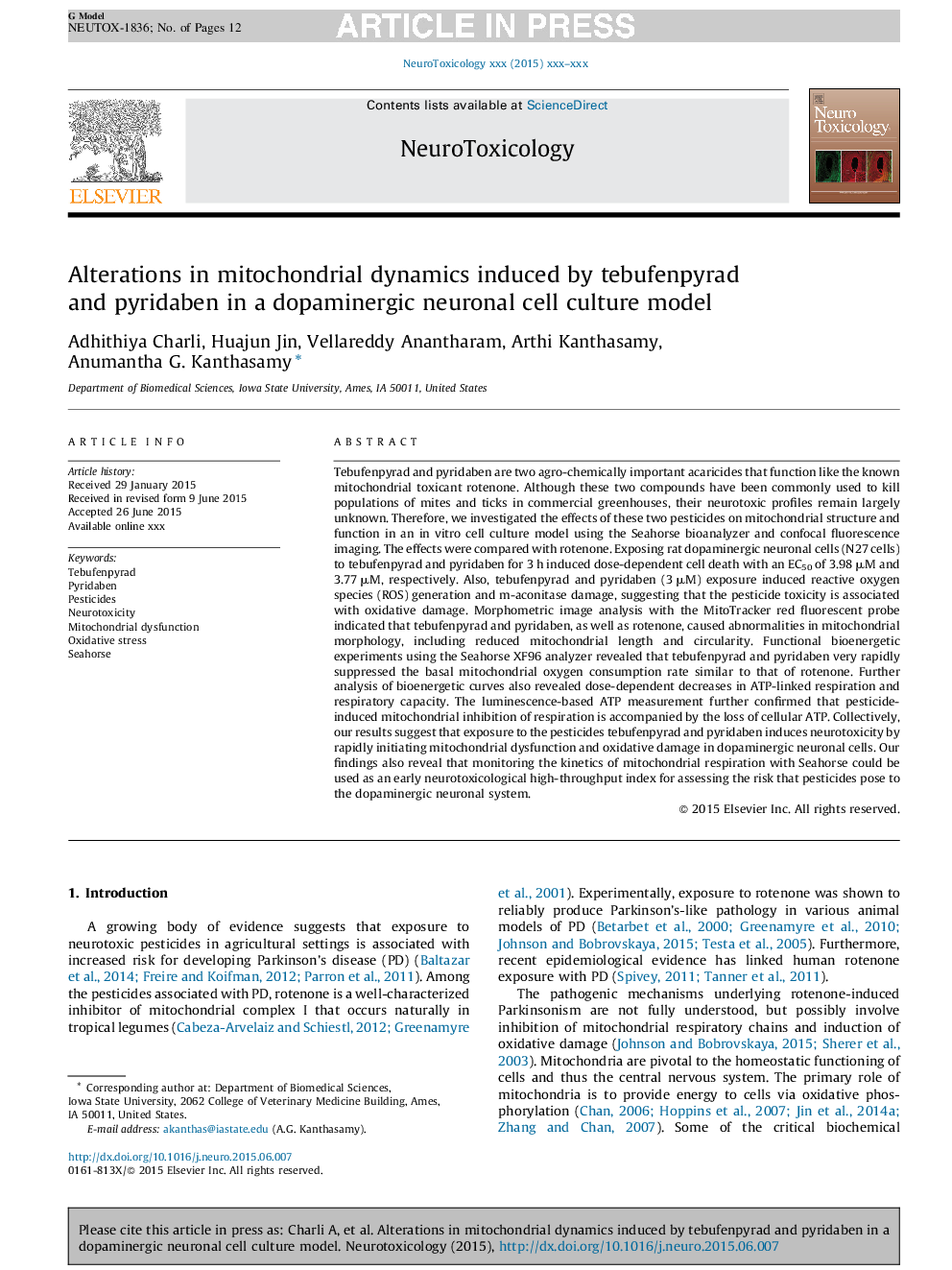| کد مقاله | کد نشریه | سال انتشار | مقاله انگلیسی | نسخه تمام متن |
|---|---|---|---|---|
| 5854825 | 1562041 | 2016 | 12 صفحه PDF | دانلود رایگان |
عنوان انگلیسی مقاله ISI
Alterations in mitochondrial dynamics induced by tebufenpyrad and pyridaben in a dopaminergic neuronal cell culture model
ترجمه فارسی عنوان
تغییرات در پویایی میتوکندری که بوسیله تروبفنپیراد و پیریدبن در یک مدل کشت سلول های نورونی دوپامینرژیک ایجاد شده است
دانلود مقاله + سفارش ترجمه
دانلود مقاله ISI انگلیسی
رایگان برای ایرانیان
کلمات کلیدی
موضوعات مرتبط
علوم زیستی و بیوفناوری
علوم محیط زیست
بهداشت، سم شناسی و جهش زایی
چکیده انگلیسی
Tebufenpyrad and pyridaben are two agro-chemically important acaricides that function like the known mitochondrial toxicant rotenone. Although these two compounds have been commonly used to kill populations of mites and ticks in commercial greenhouses, their neurotoxic profiles remain largely unknown. Therefore, we investigated the effects of these two pesticides on mitochondrial structure and function in an in vitro cell culture model using the Seahorse bioanalyzer and confocal fluorescence imaging. The effects were compared with rotenone. Exposing rat dopaminergic neuronal cells (N27 cells) to tebufenpyrad and pyridaben for 3 h induced dose-dependent cell death with an EC50 of 3.98 μM and 3.77 μM, respectively. Also, tebufenpyrad and pyridaben (3 μM) exposure induced reactive oxygen species (ROS) generation and m-aconitase damage, suggesting that the pesticide toxicity is associated with oxidative damage. Morphometric image analysis with the MitoTracker red fluorescent probe indicated that tebufenpyrad and pyridaben, as well as rotenone, caused abnormalities in mitochondrial morphology, including reduced mitochondrial length and circularity. Functional bioenergetic experiments using the Seahorse XF96 analyzer revealed that tebufenpyrad and pyridaben very rapidly suppressed the basal mitochondrial oxygen consumption rate similar to that of rotenone. Further analysis of bioenergetic curves also revealed dose-dependent decreases in ATP-linked respiration and respiratory capacity. The luminescence-based ATP measurement further confirmed that pesticide-induced mitochondrial inhibition of respiration is accompanied by the loss of cellular ATP. Collectively, our results suggest that exposure to the pesticides tebufenpyrad and pyridaben induces neurotoxicity by rapidly initiating mitochondrial dysfunction and oxidative damage in dopaminergic neuronal cells. Our findings also reveal that monitoring the kinetics of mitochondrial respiration with Seahorse could be used as an early neurotoxicological high-throughput index for assessing the risk that pesticides pose to the dopaminergic neuronal system.
ناشر
Database: Elsevier - ScienceDirect (ساینس دایرکت)
Journal: NeuroToxicology - Volume 53, March 2016, Pages 302-313
Journal: NeuroToxicology - Volume 53, March 2016, Pages 302-313
نویسندگان
Adhithiya Charli, Huajun Jin, Vellareddy Anantharam, Arthi Kanthasamy, Anumantha G. Kanthasamy,
